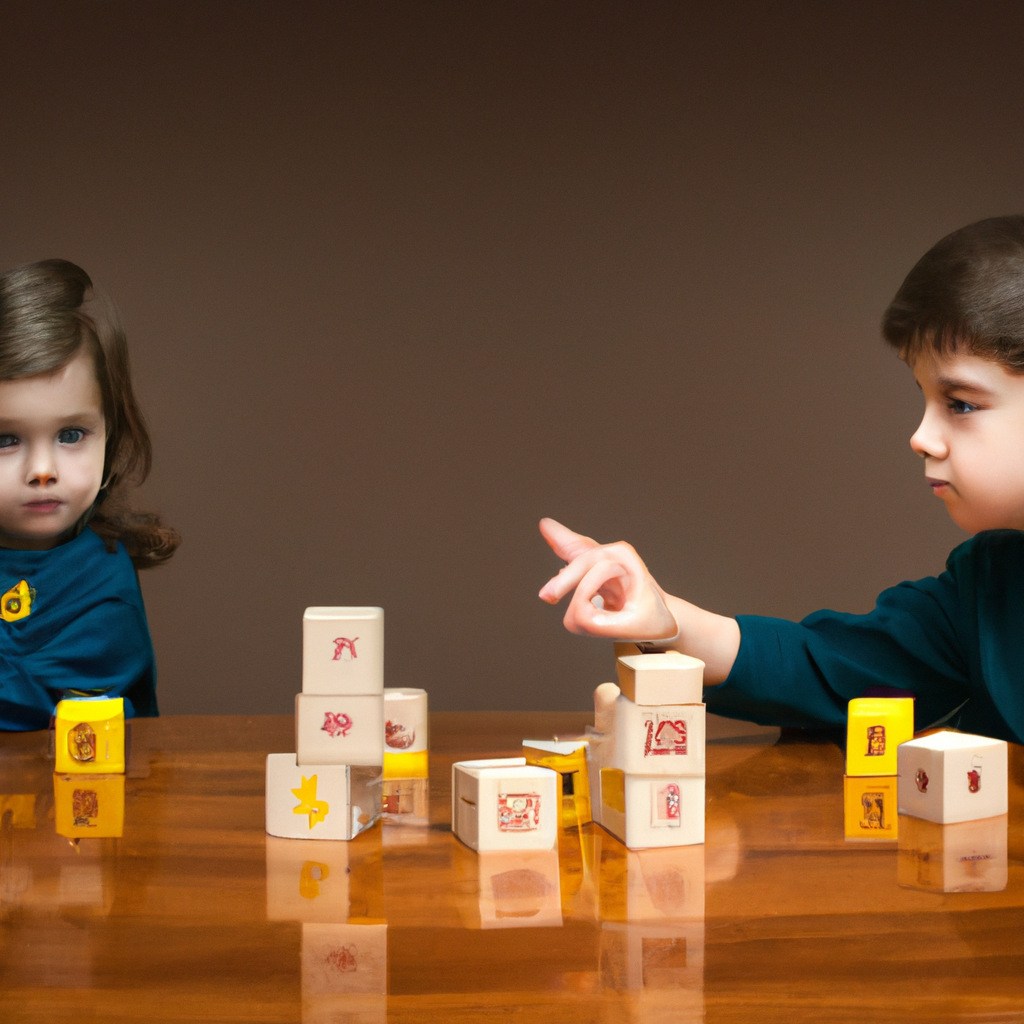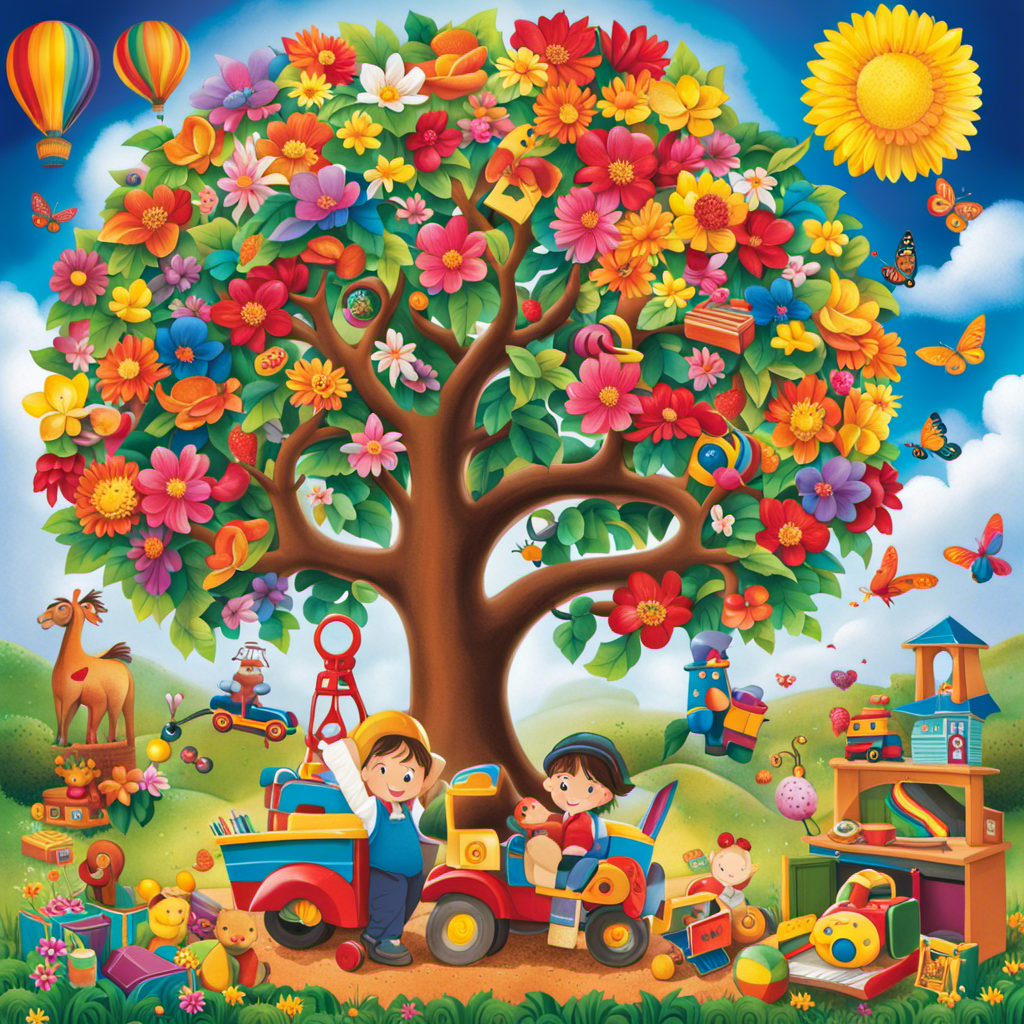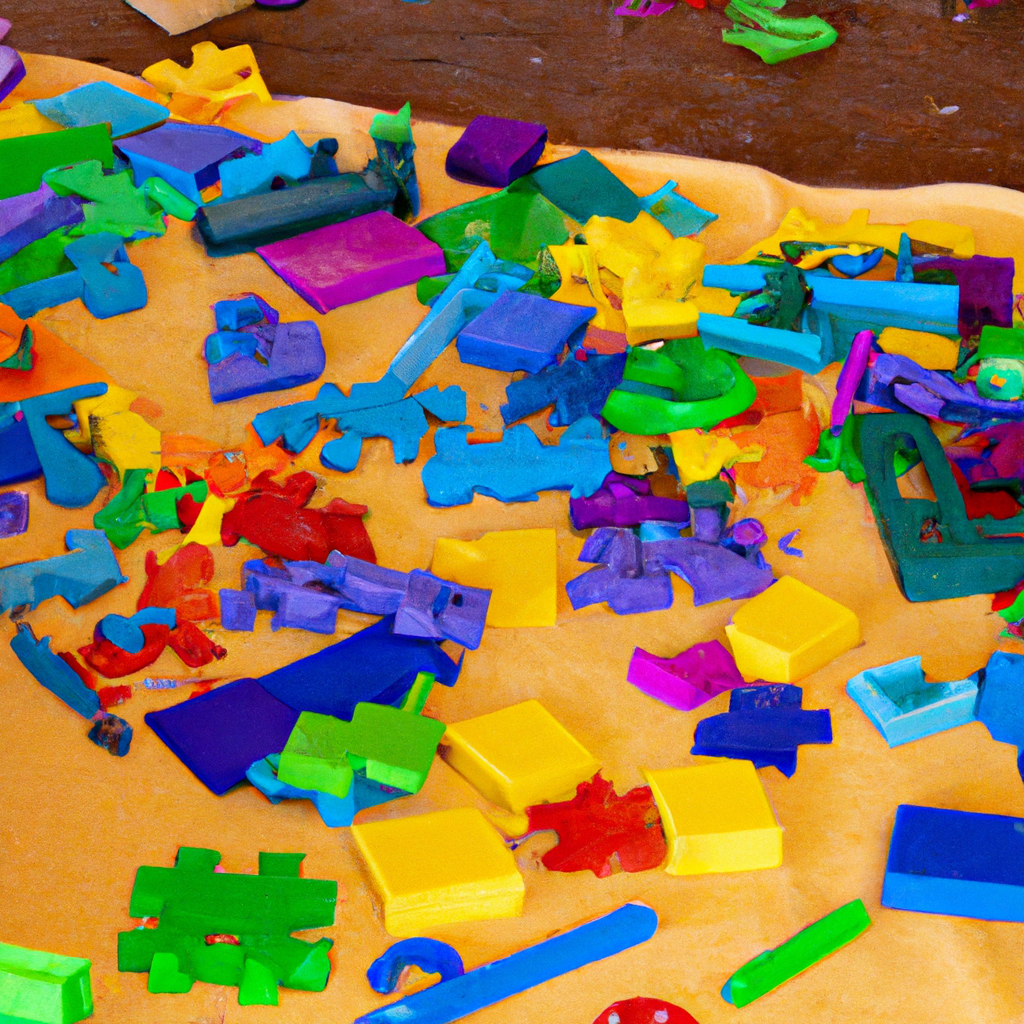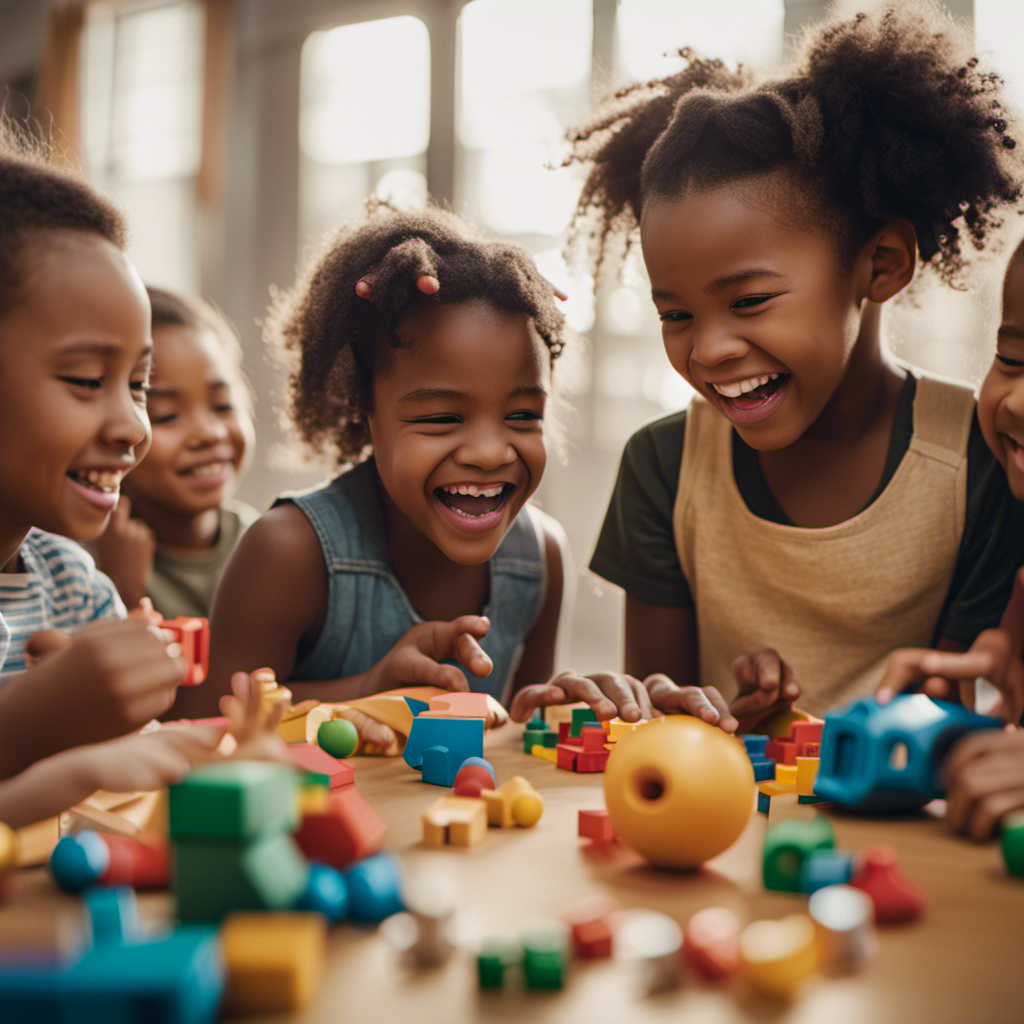I am eager to delve into Piaget’s cognitive development theory as I have a strong interest in children’s growth and development. This theory sheds light on how children learn and evolve, uncovering the mysteries of their developing minds.
Piaget’s stages – sensorimotor, preoperational, concrete operational, and formal operational – provide a roadmap for understanding how children construct knowledge.
Join me on this illuminating journey as we explore assimilation, accommodation, schemas, and more, and uncover the captivating world of a child’s learning process.
Key Takeaways
- Piaget’s theory of cognitive development provides a roadmap for understanding how children construct knowledge.
- Cognitive development in childhood involves important milestones such as the development of object permanence and the acquisition of motor skills.
- Symbolic play and imagination play a significant role in the preoperational stage of cognitive development.
- Cognitive development in adolescence and adulthood includes increased abstract thinking, metacognitive skills, and critical thinking abilities.
Stages of Cognitive Development
In the stages of cognitive development, you’ll notice that a child’s thinking and reasoning abilities evolve over time. This development starts in infancy and continues into adulthood.
During adolescence, cognitive development is characterized by increased abstract thinking and the ability to reason about hypothetical situations. Teenagers may also develop metacognitive skills, such as being able to reflect on their own thoughts and thinking processes.
As they enter adulthood, cognitive development continues to progress. Adults are able to think critically, solve complex problems, and consider multiple perspectives. They also have a greater capacity for self-regulation and impulse control.
The cognitive development that occurs during adolescence and adulthood is essential for navigating the complexities of the world. It allows individuals to make informed decisions, analyze situations, and understand the consequences of their actions. This development is influenced by various factors, including education, life experiences, and cultural background.
Transitioning into the next section, the sensorimotor stage, we can see how cognitive development in infancy sets the foundation for later stages.
Sensorimotor Stage
During the sensorimotor stage of development, children experience significant milestones in their cognitive development.
One key aspect of this stage is the development of object permanence, which is the understanding that objects continue to exist even when they are out of sight. This milestone is essential for children to develop a sense of stability and predictability in their environment.
Additionally, the sensorimotor stage provides the opportunity for children to engage in sensory exploration and learning, which helps them understand the world around them through their senses.
Lastly, this stage is crucial for the acquisition of motor skills, as children learn to coordinate their movements and interact with their surroundings.
Object Permanence Development
Object permanence is the understanding that objects continue to exist even when they are not visible. This concept is a crucial milestone in a child’s cognitive development. According to Piaget’s theory, during the sensorimotor stage, which typically occurs from birth to around 2 years of age, infants gradually acquire object permanence.
At first, they believe that objects cease to exist when out of sight. However, as they develop, they start to understand that objects have a continued existence even when they cannot be seen or touched. This newfound understanding allows children to engage in more complex play, such as hide-and-seek, where they seek hidden objects or people.
Furthermore, it lays the foundation for future cognitive abilities, including problem-solving and memory retention. As children grasp the concept of object permanence, they become more inclined to engage in sensory exploration and learning.
Sensory Exploration and Learning
Sensory exploration and learning are crucial for children’s cognitive growth and development. According to research on sensory integration and cognitive development, here are four important aspects to consider:
-
Multisensory experiences: Engaging multiple senses simultaneously, such as seeing, hearing, touching, and smelling, helps children make meaningful connections between their environment and their cognitive processes.
-
Sensory integration: The brain’s ability to process and make sense of sensory information from different senses is essential for cognitive development. By integrating sensory input, children can develop higher-order thinking skills, problem-solving abilities, and abstract reasoning.
-
Sensory play: Providing opportunities for sensory play, such as playing with sand, water, or textured materials, allows children to explore different sensations, which enhances their brain development and promotes cognitive growth.
-
Sensory regulation: Helping children regulate their sensory experiences by providing a supportive environment and teaching them self-regulation techniques empowers them to become more focused, attentive, and engaged in learning.
Motor Skill Acquisition
To acquire motor skills, you need to engage in activities that promote coordination and muscle control. Fine motor skills involve the use of smaller muscles, such as those in the hands and fingers, while gross motor skills involve larger muscles, like those in the arms and legs.
During this stage of development, children are learning to grasp objects, manipulate toys, and perform tasks that require precise movements. Through practice and repetition, they are able to improve their hand-eye coordination and develop greater control over their movements. These skills are essential for daily activities such as writing, drawing, and buttoning clothes.
As children progress through the motor skill acquisition stage, they also begin to enter the preoperational stage of cognitive development, where they develop symbolic thinking and language skills.
Preoperational Stage
During the preoperational stage of development, children begin to engage in symbolic play and demonstrate a rich imagination. This means that they are able to use objects and actions to represent something else, like pretending a block is a phone or pretending to be a superhero.
However, they also display egocentrism, where they struggle to take the perspective of others and only see the world from their own point of view. This can lead to challenges in understanding and empathizing with others.
Symbolic Play and Imagination
Piaget’s theory of cognitive development suggests that children learn through engaging in symbolic play and using their imagination. Symbolic play development and imaginative thinking are crucial aspects of a child’s cognitive growth during the preoperational stage. Through symbolic play, children are able to represent objects, actions, and ideas using symbols or pretend play. This type of play allows them to explore different roles, scenarios, and concepts, promoting their cognitive flexibility and problem-solving skills. Imagination plays a central role in this process, as children use their creative thinking to transform objects or situations into something else entirely. It is through this imaginative thinking that children develop their cognitive abilities, such as memory, language, and logical reasoning. In summary, symbolic play and imagination are essential for children’s cognitive development as they facilitate their exploration, understanding, and manipulation of the world around them.
| Symbolic Play Development | Imaginative Thinking | Cognitive Growth |
|---|---|---|
| Allows representation of objects, actions, and ideas | Promotes creativity and cognitive flexibility | Enhances problem-solving skills |
| Encourages exploration and understanding of the world | Facilitates memory, language, and logical reasoning | Fosters cognitive growth and development |
| Supports social interaction and communication skills | Develops symbolic thinking and abstract reasoning | Promotes cognitive engagement and learning |
Moving on to the next aspect of Piaget’s theory of cognitive development, we will explore the concept of egocentrism and perspective taking.
Egocentrism and Perspective Taking
Egocentrism and perspective taking play a significant role in a child’s cognitive growth. Understanding these concepts is crucial for a child’s social and emotional development. Here are four ways in which egocentrism and perspective taking impact a child’s cognitive growth:
-
Theory of Mind: Egocentrism, the inability to understand others’ perspectives, gradually develops into theory of mind, the ability to understand and attribute mental states to others. This helps children navigate social interactions more effectively.
-
Empathy: Perspective taking allows children to put themselves in someone else’s shoes, fostering empathy and compassion. This helps them build stronger relationships and develop a sense of emotional connectedness.
-
Problem-solving: Perspective taking enables children to consider multiple viewpoints when solving problems. It enhances their critical thinking skills and promotes creative problem-solving abilities.
-
Cooperation: Understanding others’ perspectives facilitates effective communication and cooperation. Children learn to work collaboratively, negotiate, and compromise, which are essential skills for successful social interactions.
As children develop their egocentrism and perspective-taking abilities, they enter the concrete operational stage, where they become capable of more logical and systematic reasoning.
Concrete Operational Stage
Children in the concrete operational stage can think logically and understand the concept of conservation. This stage, which typically occurs between the ages of 7 and 11, is a time of significant cognitive growth for children. One key aspect of the concrete operational stage is the development of cognitive flexibility. This refers to the ability to mentally manipulate information and think about multiple perspectives.
To illustrate the importance of cognitive flexibility, let’s consider a table that showcases the cognitive changes that occur during the concrete operational stage:
| Cognitive Changes in Concrete Operational Stage | ||
|---|---|---|
| Development of | Increased | Enhanced |
| Conservation | Logical | Cognitive |
| Reasoning | Flexibility | |
| Ability to | Understanding | |
| Understand | of Multiple | |
| Conservation | Perspectives |
This table highlights the significant cognitive advancements that take place during the concrete operational stage. Children become more adept at understanding conservation, engaging in logical reasoning, and demonstrating cognitive flexibility. These skills lay the foundation for further cognitive growth in the subsequent formal operational stage, where children begin to think abstractly and hypothetically.
In the next section, we will explore the formal operational stage and the exciting cognitive changes that occur during this phase of development.
Formal Operational Stage
During the formal operational stage, individuals can think abstractly and hypothetically as their cognitive abilities continue to develop. This stage, which typically starts around age 11 and continues into adulthood, is a crucial period in cognitive development.
Abstract thinking involves the ability to think about concepts, ideas, and possibilities that are not directly observable. It allows individuals to consider hypothetical situations and explore different outcomes. This type of thinking is essential for problem-solving skills, as it enables individuals to analyze complex situations and develop creative solutions.
In this stage, children begin to understand and apply logical reasoning to solve problems. They can think systematically and consider multiple perspectives. They develop the ability to form and test hypotheses, allowing them to evaluate different options and make informed decisions. This cognitive growth greatly enhances their problem-solving abilities and prepares them for the challenges of adulthood.
Transitioning from the formal operational stage to the next stage, assimilation and accommodation, is a natural progression in cognitive development. This transition involves the assimilation of new information into existing knowledge structures and the accommodation of those structures to incorporate new information. It is through this process that individuals continue to refine their cognitive abilities and adapt to new situations and challenges.
Assimilation and Accommodation
In the previous section, we discussed the Formal Operational Stage of Piaget’s theory of cognitive development. Now, let’s delve into another important aspect of Piaget’s theory: assimilation and accommodation.
Assimilation and accommodation are two processes that occur as children interact with their environment and learn new information. Assimilation refers to the process of fitting new information into existing mental frameworks, or schemas. It is like adding a new puzzle piece to a completed puzzle. Accommodation, on the other hand, involves modifying existing schemas or creating new ones to incorporate new information. It is like rearranging the puzzle pieces to accommodate the new piece.
According to Piaget, cognitive development is a continuous process of achieving cognitive equilibrium, or a balance between new information and existing schemas. However, when new information cannot be easily assimilated or accommodated, it leads to cognitive disequilibrium, causing the child to experience a sense of confusion or frustration. This disequilibrium motivates the child to actively seek out new information and adjust their schemas accordingly, ultimately leading to cognitive growth.
Understanding assimilation and accommodation is essential to comprehend how children learn and develop cognitively. It helps us appreciate the importance of providing children with opportunities to explore, experiment, and interact with their environment to promote cognitive growth.
Next, we will explore the concept of schemas and schema development, which plays a crucial role in Piaget’s theory of cognitive development.
Schemas and Schema Development
To better understand schema development, think about how your mind organizes and categorizes new information. Schemas are mental structures that help us make sense of the world around us. As a child, my mind was constantly building and revising schemas to make sense of new experiences.
Here are three ways in which schema development influenced my learning:
-
Schema Organization: My mind would organize similar information into categories or schemas. For example, I had a schema for animals, which included dogs, cats, and birds. This helped me understand that different animals have similarities and differences.
-
Cognitive Flexibility: As I encountered new information that didn’t fit into existing schemas, my mind would adapt and create new ones. This cognitive flexibility allowed me to expand my understanding and incorporate new knowledge.
-
Schema Revision: Over time, my schemas would evolve and become more complex. As I learned more about the world, I would revisit and revise my existing schemas to accommodate new information.
Understanding the process of schema development is essential for educators and caregivers. By supporting children’s schema development, we can foster their cognitive flexibility and promote meaningful learning experiences.
Transitioning to the next section, object permanence and conservation are two important concepts in Piaget’s theory of cognitive development.
Object Permanence and Conservation
Object permanence and conservation are two concepts that play a significant role in understanding how children develop cognitive skills.
Object permanence refers to a child’s ability to understand that objects continue to exist even when they are not directly perceived. This milestone typically emerges around 8 to 12 months of age. For example, a child who has achieved object permanence will search for a toy that has been hidden under a blanket. This demonstrates their understanding that the toy still exists, even though they cannot see it.
Conservation, on the other hand, involves the understanding that certain properties of objects, such as quantity or volume, remain the same even when their physical appearance changes. This ability usually develops around the ages of 6 to 7 years. For instance, a child who has mastered conservation will recognize that pouring water from a tall, narrow glass into a short, wide glass does not change the amount of water.
Both object permanence and conservation are crucial for a child’s cognitive development. They allow children to engage in symbolic play, where they use objects to represent other things and engage in pretend scenarios. These concepts also facilitate motor skill acquisition, as children learn to manipulate objects in their environment based on their understanding of object permanence and conservation.
Understanding object permanence and conservation lays the foundation for the subsequent development of egocentrism and perspective taking.
Egocentrism and Perspective Taking
Understanding egocentrism and perspective taking is crucial for a child’s social and emotional development. Egocentrism refers to a child’s inability to understand that others may have different thoughts, feelings, or perspectives than their own. According to Piaget’s theory of cognitive development, egocentrism is a normal and necessary stage in a child’s development. It occurs during the preoperational stage, typically between the ages of 2 and 7.
During this stage, children are primarily focused on their own point of view and struggle to consider the perspectives of others. They may believe that everyone sees the world exactly as they do, and have difficulty understanding that others may have different thoughts or beliefs. This egocentric thinking can impact a child’s social interactions, as they may struggle to understand the feelings and perspectives of their peers.
However, as children develop their theory of mind, they begin to understand that others can have different thoughts, beliefs, and perspectives. Theory of mind refers to the ability to understand that others have mental states, such as thoughts, beliefs, and desires, that may differ from one’s own. This development allows children to engage in perspective-taking, which is the ability to see things from another person’s point of view.
Research has shown that children who are able to successfully engage in perspective-taking have more positive social interactions, develop empathy, and have better emotional regulation skills. Therefore, it is important for adults to support children’s understanding of egocentrism and perspective taking through modeling, open communication, and providing opportunities for perspective-taking activities.
Frequently Asked Questions
What Are Some Examples of Activities or Behaviors That Demonstrate Object Permanence in Children?
Object permanence is a crucial concept in a child’s cognitive development. It refers to the understanding that objects continue to exist even when they are out of sight.
One example of demonstrating object permanence is when a child searches for a hidden toy. They have to understand that the toy is still there even though they can’t see it.
This ability develops around 8 to 9 months of age, according to Piaget’s theory. It is a significant milestone in overcoming egocentrism and understanding the world around them.
How Does Egocentrism Affect a Child’s Ability to Understand and Take Into Account Other People’s Perspectives?
Egocentrism has significant consequences on a child’s ability to understand and consider other perspectives. It limits their capacity to see things from another person’s point of view, leading to difficulty in empathizing and taking others’ needs into account.
This aspect of Piaget’s theory has important applications in understanding children’s social interactions and moral development. By recognizing and addressing egocentrism, we can support children in developing the cognitive skills necessary for successful social interactions and the ability to consider multiple perspectives.
Can You Provide Specific Examples of How Children Develop and Use Schemas in Their Everyday Lives?
When it comes to child development and cognitive processes, one important aspect is how children develop and use schemas in their everyday lives.
Schemas are mental frameworks that help children organize and make sense of the world around them. For example, a child may develop a schema for animals, categorizing them based on their characteristics. This allows them to quickly identify and understand different types of animals they encounter.
Schemas play a crucial role in a child’s learning and understanding of the world.
Is There a Specific Age Range During Which Children Typically Transition From the Concrete Operational Stage to the Formal Operational Stage?
During the transition age from concrete operational to formal operational stage, children typically develop more advanced cognitive abilities. This stage, which usually occurs around adolescence, marks a significant shift in a child’s thinking.
They begin to think more abstractly, reason hypothetically, and consider multiple perspectives. This transition is crucial as it enables children to engage in more complex problem-solving and critical thinking tasks, preparing them for adulthood.
How Do Assimilation and Accommodation Work Together to Help a Child Learn and Adapt to New Information or Experiences?
Assimilation and accommodation work together to help a child learn and adapt to new information or experiences.
Assimilation is when a child incorporates new knowledge or experiences into their existing mental structures.
Accommodation, on the other hand, involves modifying those mental structures to fit the new information.
This synergy between assimilation and accommodation allows children to constantly learn and grow, expanding their understanding of the world around them.
It is through this process that children develop cognitive abilities and gain a deeper understanding of the world.
Conclusion
In conclusion, Piaget’s theory of cognitive development provides valuable insights into how children learn and grow. By understanding the different stages of cognitive development, such as the sensorimotor, preoperational, concrete operational, and formal operational stages, we can better comprehend a child’s abilities and limitations at each stage.
One interesting statistic to consider is that by the age of 2, most children have developed object permanence, which means they understand that objects continue to exist even when they are no longer visible. This milestone is an important step in a child’s cognitive development and demonstrates their growing understanding of the world around them.
Avery brings the magic of words to life at Toddler Ride On Toys. As a dedicated writer, she combines her love for writing with her fascination for child development to craft articles that resonate with our audience. With a background in journalism and a knack for storytelling, Avery’s pieces inform, engage, and inspire parents and caregivers.










